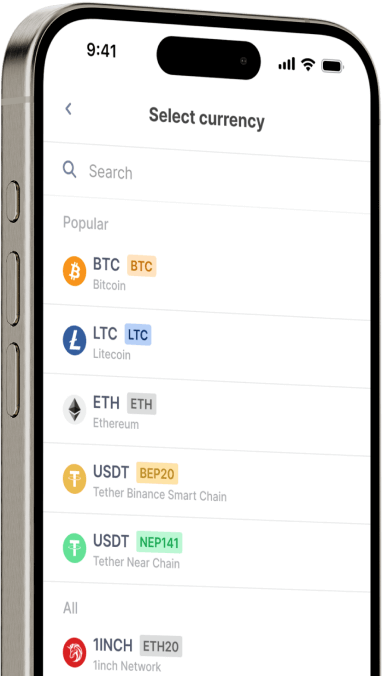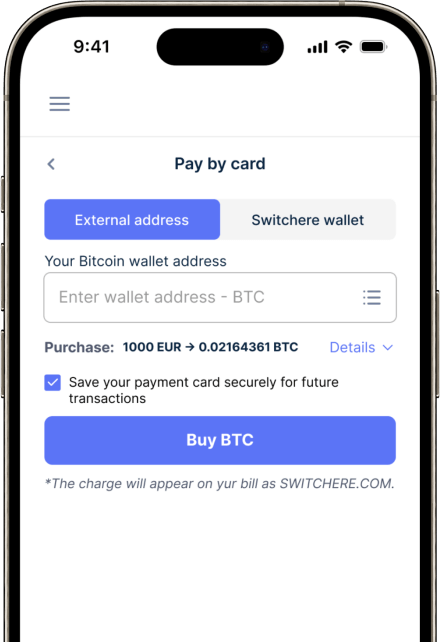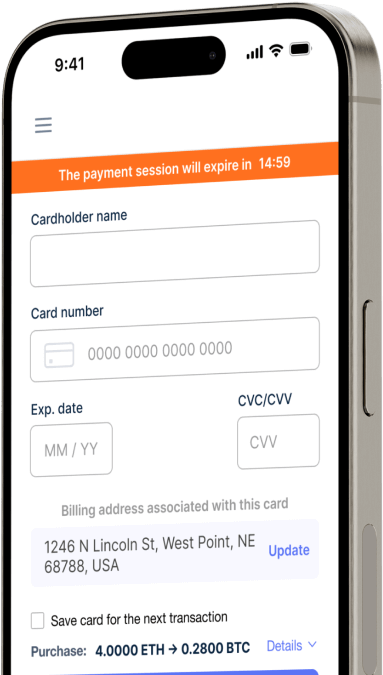Konverter
Brazilian Real (BRL) til EOS (EOS) med det samme
Køb EOS (EOS) med Brazilian Real (BRL) nemt hos Switchere og nyd godt af hurtige, sikre transaktioner.
Omkring
EOS (EOS)
EOS (EOS) er en tredjegenerations blockchain-platform, der er udviklet ved hjælp af open source-softwaren EOSIO, og som er designet til at understøtte udvikling, hosting og udførelse af decentrale applikationer (dApps) i stor skala. Den sigter mod at løse de udfordringer med skalerbarhed og brugervenlighed, der er fremherskende i tidligere blockchain-teknologi, ved at tilbyde høj transaktionsgennemstrømning og en fleksibel styringsmodel. Kernen i dens arkitektur drejer sig om en DPoS-konsensusmekanisme (Delegated Proof-of-Stake), hvor tokenholdere stemmer på Block Producers (BP'er), der er ansvarlige for at validere transaktioner og vedligeholde det decentrale netværk. Dette system er designet til at muliggøre hurtigere bloktider og betydeligt højere transaktioner pr. sekund sammenlignet med mange proof-of-work-netværk.
Et vigtigt kendetegn ved EOS er den ressourcebaserede model, hvor besiddelse og indsættelse af EOS-tokens giver brugere og udviklere proportional adgang til netværksressourcer som CPU (beregning) og NET (båndbredde) i stedet for at kræve gasgebyrer pr. transaktion. RAM, en anden kritisk ressource til lagring af data i kæden, handles på et åbent marked. EOS understøtter smarte kontrakter skrevet i C++ og kompileret til WebAssembly (WASM), hvilket giver et robust miljø til kompleks dApp-udvikling. EOS' digitale aktiv har flere funktioner: Det er et værktøjstoken til at få adgang til netværksressourcer, faciliterer on-chain governance gennem afstemning om BP'er og protokolændringer og fungerer som et udvekslingsmedium inden for økosystemet.
EOS positionerer sig som en grundlæggende Web3-infrastruktur og stræber efter at levere en udviklervenlig platform i virksomhedsklasse. Selv om den står over for et konkurrencepræget landskab, giver dens vægt på skalerbarhed, en følelsesmæssig brugeroplevelse gennem ressourceindsats og dens etablerede smarte kontraktfunktioner mulighed for at understøtte forskellige DeFi-applikationer, spilplatforme og andre on-chain-løsninger. Den løbende udvikling af EOSIO-softwaren og fællesskabsstyrede initiativer fortsætter med at forme dens rolle inden for det bredere digitale hovedbogsområde med fokus på at forbedre ydeevne og interoperabilitet.
Køb andre 150+ kryptovalutaer for Brazilian Real (BRL)
Andre mønter til Brazilian Real (BRL)
-
BRL til ZRX
-
BRL til 1INCH
-
BRL til AAVE
-
BRL til ACH
-
BRL til ALGO
-
BRL til TLM
-
BRL til ANKR
-
BRL til APE
-
BRL til NFT
-
BRL til API3
-
BRL til APT
-
BRL til ARPA
-
BRL til AUDIO
-
BRL til AVAX
-
BRL til AVAX
-
BRL til AXS
-
BRL til BADGER
-
BRL til BAL
-
BRL til BNT
-
BRL til BAT
-
BRL til BNB
-
BRL til BSW
-
BRL til BSV
-
BRL til BLUR
-
BRL til BONE
-
BRL til CTSI
-
BRL til CELR
-
BRL til CELO
-
BRL til CEL
-
BRL til LINK
-
BRL til CHZ
-
BRL til CHR
-
BRL til C98
-
BRL til COMP
-
BRL til CFX
-
BRL til PEOPLE
-
BRL til CVX
-
BRL til ATOM
-
BRL til CTC
-
BRL til CRV
-
BRL til DAI
-
BRL til DASH
-
BRL til MANA
-
BRL til DENT
-
BRL til DGB
-
BRL til DYDX
-
BRL til XEC
-
BRL til EOS
-
BRL til ETC
-
BRL til ENS
-
BRL til ETHW
-
BRL til FET
-
BRL til FIL
-
BRL til FLOKI
-
BRL til GALA
-
BRL til GNO
-
BRL til ONE
-
BRL til HBAR
-
BRL til HOT
-
BRL til HOOK
-
BRL til ICX
-
BRL til ILV
-
BRL til IMX
-
BRL til INJ
-
BRL til ICP
-
BRL til IOST
-
BRL til IOTX
-
BRL til JASMY
-
BRL til JST
-
BRL til KAVA
-
BRL til KCS
-
BRL til KSM
-
BRL til KNC
-
BRL til LDO
-
BRL til LQTY
-
BRL til LPT
-
BRL til LOOKS
-
BRL til LRC
-
BRL til LUNA
-
BRL til MKR
-
BRL til MASK
-
BRL til EGLD
-
BRL til ALICE
-
BRL til NEAR
-
BRL til XEM
-
BRL til NEXO
-
BRL til NOT
-
BRL til NMR
-
BRL til OKB
-
BRL til OMG
-
BRL til ONT
-
BRL til EDU
-
BRL til OP
-
BRL til OGN
-
BRL til CAKE
-
BRL til PAXG
-
BRL til PENDLE
-
BRL til DOT
-
BRL til POL
-
BRL til QTUM
-
BRL til QNT
-
BRL til RDNT
-
BRL til XRD
-
BRL til RVN
-
BRL til REN
-
BRL til RSR
-
BRL til RLC
-
BRL til RPL
-
BRL til SFP
-
BRL til SHIB
-
BRL til SKL
-
BRL til SXP
-
BRL til STND
-
BRL til STG
-
BRL til XLM
-
BRL til GMT
-
BRL til STORJ
-
BRL til STMX
-
BRL til SUSHI
-
BRL til SNX
-
BRL til USDT (Polygon)
-
BRL til USDT (AVAC)
-
BRL til USDT (BEP20)
-
BRL til USDT (ERC20)
-
BRL til USDT (SPL)
-
BRL til USDT (NEP141)
-
BRL til USDT (FA2)
-
BRL til USDT (TRC20)
-
BRL til USDT (JETTON)
-
BRL til XTZ
-
BRL til GRT
-
BRL til SAND
-
BRL til TFUEL
-
BRL til THETA
-
BRL til RUNE
-
BRL til TON
-
BRL til TUSD (BEP20)
-
BRL til TUSD (TRC20)
-
BRL til TWT
-
BRL til UOS
-
BRL til UMA
-
BRL til UNI
-
BRL til USDC (Polygon)
-
BRL til USDC (SPL)
-
BRL til USDC (OP)
-
BRL til USDC (BEP20)
-
BRL til USDC (AVAC)
-
BRL til USDC (ARB)
-
BRL til USDC (ERC20)
-
BRL til VET
-
BRL til VRA
-
BRL til WAXP
-
BRL til WOO
-
BRL til WLD
-
BRL til WBTC
-
BRL til WMINIMA
-
BRL til XDC
-
BRL til YFI
-
BRL til YGG
-
BRL til ZIL
Sådan køber du EOS (EOS).
Ofte stillede spørgsmål
-
Hvad er de almindelige metoder til at købe EOS med brasilianske real (BRL)?
For at købe EOS med BRL bruger du typisk en kryptovalutabørs, der betjener det brasilianske marked. De mest almindelige fiat on-ramp-metoder inkluderer Pix for øjeblikkelige betalinger, TED-bankoverførsler og sommetider Boleto Bancário. Du skal gennemføre KYC/AML-verifikation på børsen, hvilket ofte kræver dit CPF-nummer, før du kan indbetale BRL og udføre et køb af digitale aktiver for EOS.
-
Hvordan fungerer Delegated Proof-of-Stake (DPoS)-systemet for EOS-styring?
I EOS DPoS-systemet bruger token-indehavere deres stakede EOS til at stemme på enheder kaldet Blokproducenter (BP'er). De BP'er, der får flest stemmer, er ansvarlige for at validere blockchain-transaktioner og producere nye blokke. Denne styringsmodel giver mulighed for høj transaktionsgennemstrømning og skalerbarhed, fordi kun et begrænset, valgt sæt noder bekræfter transaktioner. Dette adskiller sig fra systemer, hvor alle noder skal konkurrere om at validere en blok.
-
Hvad er de bedste sikkerhedspraksisser efter at have købt EOS med BRL?
Efter at have gennemført dit digitale aktivkøb fra BRL til EOS er det mest afgørende sikkerhedstrin at hæve dine EOS fra børsen til en ikke-depotbaseret digital tegnebog, hvor du kontrollerer de private nøgler. EOS bruger menneskelæselige kontonavne (f.eks. 'minwallet.gm'). Sikr denne konto ved at sikkerhedskopiere dine private nøgler offline. Del aldrig dine nøgler og vær på vagt over for phishing-svindel. For betydelige beløb bør du overveje at bruge en hardware-pung for maksimal sikkerhed.
-
Hvad gør EOS-blockchainen unik sammenlignet med andre, når man handler BRL/EOS?
EOS-blockchainen, bygget på EOSIO-software, anvender en Delegated Proof-of-Stake (DPoS) konsensusmekanisme. En vigtig unik funktion er dens ressourcemodel: i stedet for at betale gasgebyrer pr. transaktion, staker brugere EOS-tokens for at reservere netværksressourcer (CPU og NET) og køber RAM til lagerplads. Dette kan resultere i gebyrfrie transaktioner for slutbrugeren, hvilket er en stor fordel for dApp-udviklere og brugere inden for EOS-økosystemet.
-
Hvilken slags gebyrer er involveret, når man handler BRL for EOS på en børs?
Når du handler BRL for EOS, vil du støde på flere potentielle gebyrer. For det første kan der være et indbetalingsgebyr for at tilføje BRL til børsen, afhængigt af metoden (f.eks. Pix vs. TED). For det andet er det primære gebyr handelsgebyret, som er en procentdel af transaktionsværdien, som børsen opkræver for at udføre din ordre i sin ordrebog. Endelig, når du hæver dine EOS til en personlig digital tegnebog, vil børsen opkræve et hævningsgebyr for at dække blockchain-netværkets omkostninger.
-
Hvorfor er det fordelagtigt for brasilianske brugere at have et direkte BRL/EOS-handelspar?
Et direkte BRL/EOS-handelspar giver en strømlinet fiat on-ramp til EOS dApp-økosystemet for brugere i Brasilien. Det fjerner behovet for en mellemliggende konvertering, såsom BRL til USD eller BTC, og derefter til EOS. Dette reducerer kompleksiteten, minimerer potentielle valutakonverteringsgebyrer og sænker risikoen for slippage. Det tilbyder en mere effektiv og omkostningseffektiv måde at erhverve det oprindelige aktiv, der kræves for at interagere med EOS-blockchainens ressourcemodel og styring.




